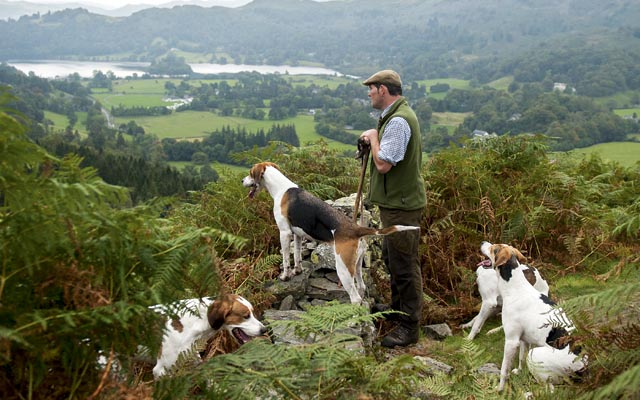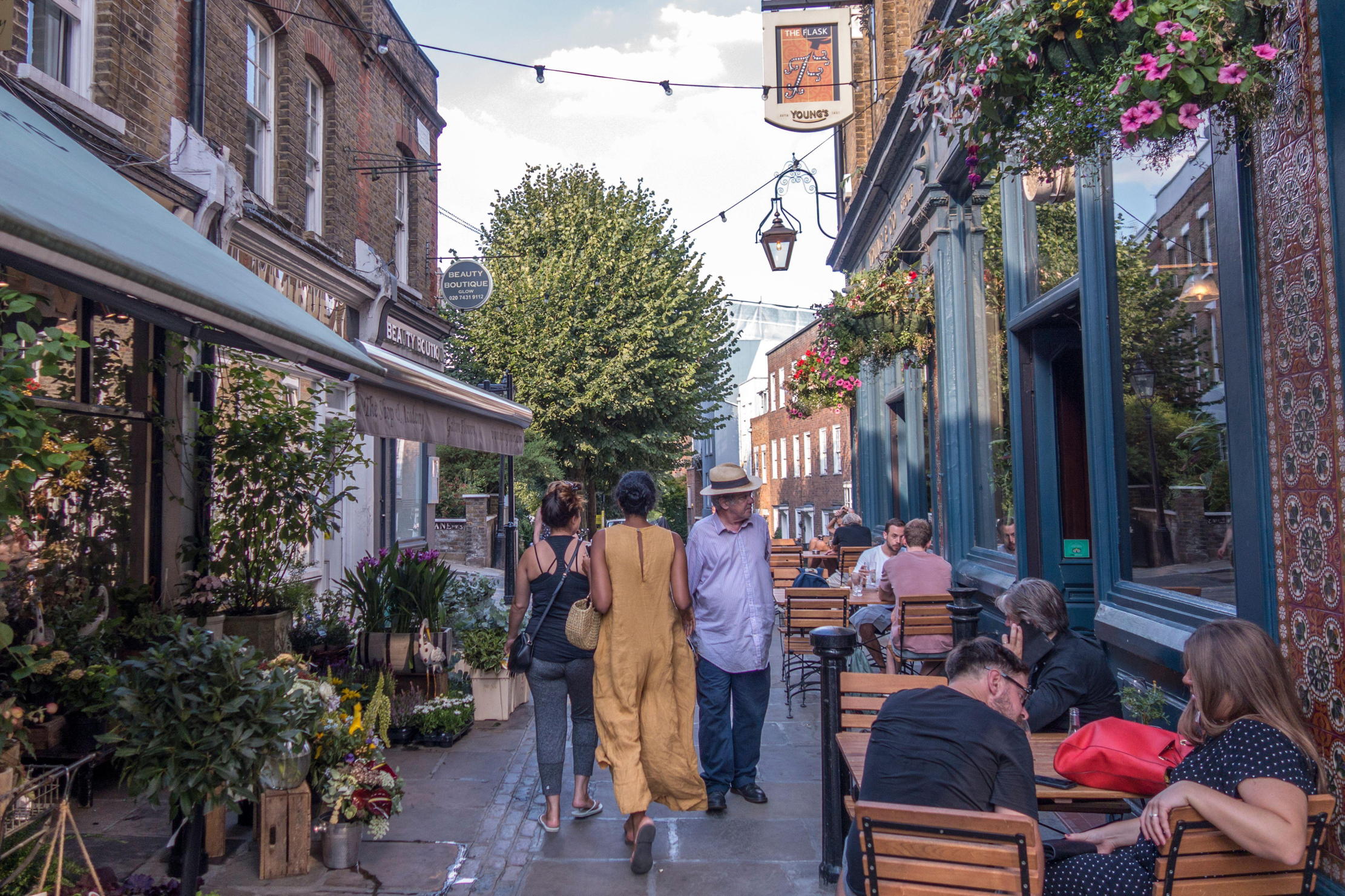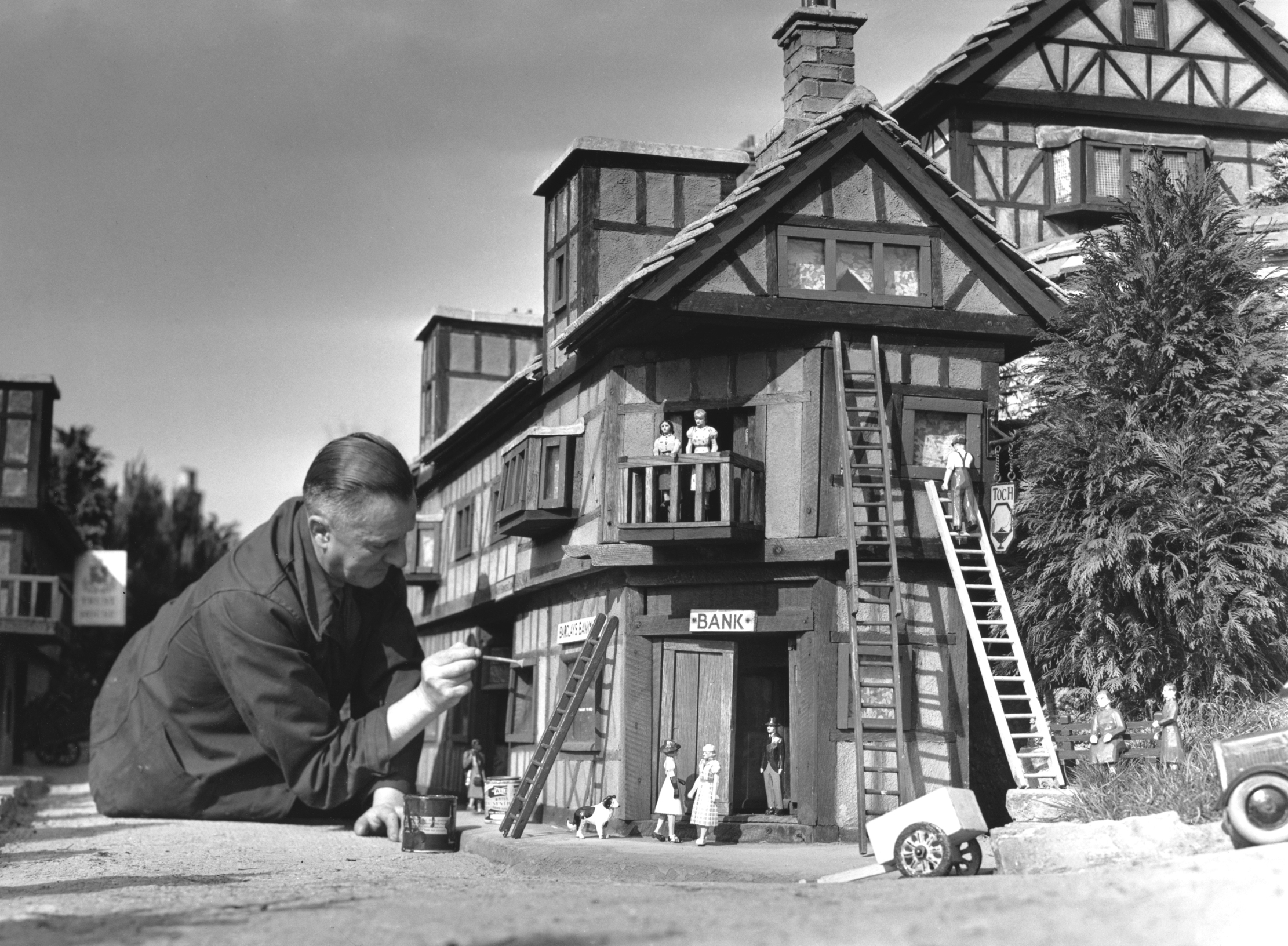Hunting with the Lakeland fell packs
Beatrix Potter herself recognised the fell packs are an integral part of the Lakeland scene. Rory Knight Bruce admires these hardy souls that keep the tradition alive.


The many attractions the Lake District holds for visitors, apart from a majestic landscape, might include Ruskin’s house at Brantwood, Beatrix Potter’s farmhouse at Hawkshead or the homes of poets Wordsworth and Southey. But for its taciturn sporting residents, its farmers and shepherds, the continuation and history of the six Lakeland fell packs of hounds are every bit as inspiring and important.
The names of past great huntsmen John Peel of song fame, Joe Bowman, Johnny Richardson, who escaped from a German prisoner-of-war camp, three Chapmans and, more recently, Edmund Porter, huntsman of the Eskdale & Ennerdale for 40 years, hard men with the fitness of marathon runners—still echo in the dales.
In living memory, no fewer than 12 huntsmen have been educated at Ambleside school, including Dennis Barrow at the Ullswater and Michael Nicholson, a Chapman on his mother’s side, who has hunted the Coniston for 18 seasons and is now its joint-master.
These men and their followers, whose intimate knowledge of the fells and folklore would astound any hill walker, know all the hounds by name, taking them into their homes during the summer months. They fund their sport through parades at local shows plus events such as pub card parties playing Nap. In the 1960s, Coniston followers aiming to raise money to buy the huntsman’s house, near the immaculate 19th-century stone-built kennels at Ambleside, hosted a Tramp Ball at which the men had to wear real or stick-on beards.
The traditional, lightly built fell hound is distinctive among British foxhounds in having ‘hare feet’ and long toenails, a genetic adaptation that enables them to hunt the steep scree and crags of the Lakes and cover up to 40 miles in a day. ‘I would say I’d cover about 20 miles on a hunting day as well,’ says Michael Nicholson, who carries the traditional leaning stick and wears the essential stout boots.
On my two days with the Coniston one in the early evening, the other in early morning hounds hunt away from their huntsman, often in deep bracken, in a scene little changed since the hunt’s inception in 1825, with the legal exception that they now ‘trail hunt’. On the evening hunt, near Kirkstone Pass, we pass a ruin once inhabited by a hermit. ‘He made his money by mending watches,’ former master Roger Westmoreland explains. ‘People never met him, but would leave their watches under a stone, then leave money under it when the watch was repaired.’
Mr Westmoreland’s father was a great friend of Richard Clapham, author of Foxhunting on the Lakeland Fells (1920): ‘They were tremendous naturalists and went egg-collecting as well as hunting together.’ In Neil Salisbury’s splendid book The History of the Coniston Foxhounds (1825–1925): In the Footsteps of Mighty Men, there are graphic contemporary accounts of the hardships faced by both hounds and huntsmen.
Sign up for the Country Life Newsletter
Exquisite houses, the beauty of Nature, and how to get the most from your life, straight to your inbox.
In the Lakes Herald of March 24, 1911, seven hounds, under huntsman George Chapman, became ‘crag-fast’. ‘Things looked very black against them being rescued,’ ran the report. ‘Three men, however, were let down the face of the crag with ropes and each hound was separately roped and hauled into safety.’ Nor should it be thought that Beatrix Potter was against hunting. Shortly after buying Troutbeck Park farm and 1,900 acres for £8,000 in 1923, she witnessed her first Coniston foxhunt and wrote in her diary: ‘I watched in amazement as the hounds bravely spilled down over the crags and fells in pursuit of their quarry.’
On another occasion, in October 1924, she accepted the brush after a terrier had entered a borran small cave and killed the fox on her land; the hounds in The Tale of Jemima Puddle-Duck are drawn from Coniston puppies that she walked. No one, however, would question the gratitude expressed by farmers when the fox that had been preying on their sheep was caught. ‘Bring me the bottle, Doreen,’ senior joint-master David Dixon recalls a farmer saying to his wife when he brought him a fox the hounds had caught. It was 9am.
Traditionally, hounds moved from parish to parish, lodging at a farm for up to a week, being fed a potage of maize and gravy (with the terriers being fed first). Everything centred on the day’s hunting and the evening’s sing-song. Although hounds now travel to meets by van three times a week until mid March the old songs are still a major tradition and an attraction for the hunting tourists who make the pilgrimage to the Lakes in autumn.
Sammy Garside, now in his nineties, always starts things off with the National Anthem (‘My anthem,’ he calls it) to which Michael Nicholson and others respond with John Peel and songs as ancient as the hills themselves. ‘The hunting songs are still popular,’ says Ron Black, author of two volumes of Lakeland hunting songs, who has followed the Coniston for 55 seasons. ‘The singing is always well received at Rydal Show, but can take place spontaneously after hunting in a farmyard or local pub.’
The 7am Saturday meet is held at the 2,000-acre Grasmere Common grazing of farmer and Coniston committee member Peter Bland, with about 20 in attendance. His son Robert, 18, plays rugby for Kendal, but tells me: ‘If hounds are meeting at home, rugby goes out the window.’ As is the tradition, Mr Bland discusses the ‘draw’ with Mr Nicholson before joining him and the third joint-master, Nicholas Mowbray, for what is to be five hours with 15½ couple of hounds on the fells. ‘The hounds are a major part of my life,’ says Mr Mowbray, who first came to the Lakes with his father in the 1970s.
To be alone with hounds on the fell is to understand the allure of the sport, which also brings knowledgeable foxhunters to the Lakes. High above Grasmere, with its merchants’ villas and gardens that might have been inspired by Beth Chatto, hounds draw in deep bracken, working tirelessly in the thick undergrowth, stopping occasionally to drink from a tarn whose cooling water hums over ancient boulders.
‘The Coniston hounds have great note,’ explains distinguished hound man Martin Letts, master of the College Valley in Northumberland since 1964, who has used their bloodlines. The offspring of one Coniston hound, Romper (’05), are in his kennel today and a further litter has gone to the Quorn to provide an outcross of speed, stamina and voice. When the Coniston took the hounds to Ireland four seasons ago, the Irish verdict was: ‘Your hounds have got wings.’
Let it not be said, in all their dedication to hunting and care of community, that the Coniston lacks a sense of humour. Peter Wybergh, recently retired as master and huntsman of the Cumberland Farmers’, has been walking a puppy for the Coniston, which is named after him. His only request to Mr Nicholson? ‘He asked me, when I’m calling for the hound in the presence of others, if I could refer to it as Mr Wybergh.’
From high on the Grasmere fell, I was able to look across the valley to Helm Crag, known also as the ‘Lion and the Lamb’, where these monumental and moving Christian emblems can be clearly seen in the distant granite expanse. ‘The virtues of Helm Crag have not been lauded enough,’ wrote that great Lakeland walker Alfred Wainwright. ‘In a region where all is beautiful, it makes a notable contribution to the natural charms and attractions of Grasmere.’ As the fell hunters and followers of the Coniston know, their landscape is also greatly enhanced if there is the sight and sound of a pack of hounds to waken them from their beds.
Country Life is unlike any other magazine: the only glossy weekly on the newsstand and the only magazine that has been guest-edited by HRH The King not once, but twice. It is a celebration of modern rural life and all its diverse joys and pleasures — that was first published in Queen Victoria's Diamond Jubilee year. Our eclectic mixture of witty and informative content — from the most up-to-date property news and commentary and a coveted glimpse inside some of the UK's best houses and gardens, to gardening, the arts and interior design, written by experts in their field — still cannot be found in print or online, anywhere else.
-
 A day walking up and down the UK's most expensive street
A day walking up and down the UK's most expensive streetWinnington Road in Hampstead has an average house price of £11.9 million. But what's it really like?
By Lotte Brundle
-
 Life in miniature: the enduring charm of the model village
Life in miniature: the enduring charm of the model villageWhat is it about these small slices of arcadia that keep us so fascinated?
By Kirsten Tambling